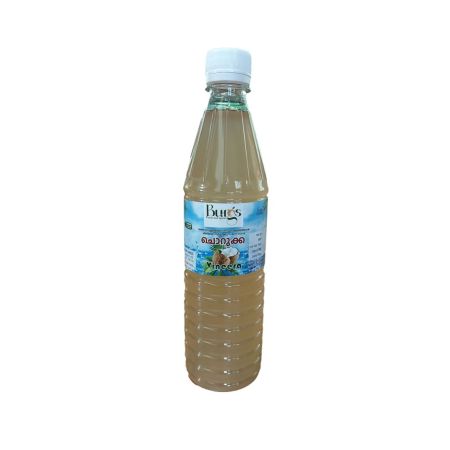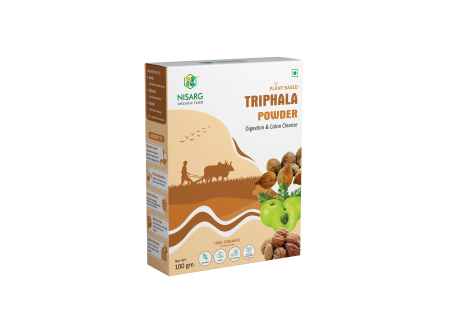|
Catnip (Nepeta cataria):
Catnip, scientifically known as Nepeta cataria, is a perennial herb from the mint family (Lamiaceae) that is native to Europe and Asia but is now widespread in North America. Famous for its ability to induce a euphoric response in cats, Catnip is more than just a plaything for feline companions—it also has several medicinal uses for humans, particularly as a calming herb. With its fragrant, heart-shaped leaves and spikes of small white or lavender flowers, Catnip is often cultivated in gardens for both its ornamental appeal and its therapeutic properties.
Botanical Characteristics:
Catnip is a herbaceous plant that grows to a height of 60-90 cm (24-36 inches). It has square, hairy stems typical of mint family plants, with ovate or heart-shaped leaves that are slightly jagged. The leaves emit a strong scent when bruised, which is characteristic of the herb. Catnip produces small, tubular flowers that are typically white to pale purple with darker spots. The plant prefers well-drained, dry soil and grows best in sunny locations. It is easy to grow and can be cultivated in gardens or pots. The leaves and flowers are harvested for their aromatic oils, which are the key to Catnip's medicinal and feline-stimulating effects.
Health Benefits of Raw Catnip:
Catnip is widely known for its effects on cats, but it also has several therapeutic benefits for humans. The key medicinal benefits of Catnip include:
Calming and Relaxing Effects:
Catnip has mild sedative properties, making it effective for calming the nervous system and reducing anxiety, stress, and tension.
It is commonly used as a natural remedy for insomnia and can promote restful sleep by soothing the mind and reducing anxiety-induced restlessness.
Catnip tea is a popular choice for relieving nervousness and promoting relaxation without causing drowsiness or a "drugged" feeling.
Digestive Aid and Relief from Stomach Issues:
Catnip has traditionally been used to treat digestive issues such as indigestion, bloating, and cramps. It helps to relax the muscles of the digestive tract and reduce spasms.
It can help relieve gas and promote smoother digestion, making it a useful herb for those with upset stomachs or mild gastrointestinal discomfort.
Catnip tea or infusions are often consumed to soothe nausea or ease digestive disturbances.
Anti-inflammatory and Antioxidant Effects:
Catnip contains several compounds with anti-inflammatory properties, making it beneficial for reducing swelling and irritation in the body.
It is used to relieve symptoms of inflammation in conditions such as arthritis, muscle pain, and headaches.
The plant also contains antioxidants that help protect the body from oxidative stress caused by free radicals, contributing to overall cellular health and wellness.
Antibacterial and Antiviral Properties:
Catnip has natural antibacterial and antiviral properties, making it useful for fighting infections and boosting immune system health.
It has been used as a folk remedy to combat colds, flu, and respiratory infections by soothing throat inflammation and promoting a healthy immune response.
Catnip's antimicrobial properties make it a beneficial herb for treating minor cuts, wounds, or skin irritations.
Relieves Menstrual Cramps and PMS Symptoms:
Catnip has antispasmodic effects, which make it effective in relieving menstrual cramps and discomfort related to PMS (premenstrual syndrome).
It can help reduce bloating, irritability, and abdominal cramps, making it a gentle herb to support women's health during their menstrual cycle.
Catnip is often used in combination with other herbs like chamomile or ginger to provide soothing relief from these symptoms.
Supports Respiratory Health:
Catnip can help alleviate respiratory symptoms like coughing and congestion. It is often used in herbal remedies for colds, flu, and bronchitis to relieve chest tightness and clear mucus.
It acts as a mild expectorant, helping to loosen phlegm and ease breathing difficulties, especially in cases of mild respiratory infections.
The soothing effects of Catnip can also help relieve sore throats and dry coughs, making it a natural remedy for throat irritation.
Anti-spasmodic Effects on the Muscles:
Catnip is known for its ability to relax smooth and skeletal muscles, which makes it useful for relieving tension in the muscles.
It can be used as a natural remedy for muscle cramps, tension headaches, or discomfort related to overexertion or stress.
The herb is often used in warm baths or as a compress to ease muscle pain and discomfort.
Culinary and Medicinal Uses of Raw Catnip:
Catnip Tea: One of the most common uses of Catnip for humans is in the form of herbal tea. The dried leaves and flowers can be steeped in hot water to create a calming tea. It has a mild, slightly minty flavor and can be enjoyed on its own or mixed with other herbs like lemon balm or chamomile.
Catnip Tincture or Extract: The leaves of the Catnip plant can be distilled into tinctures or extracts, which are used in herbal medicine to relieve anxiety, digestive issues, and to promote relaxation.
Topical Uses: The oil extracted from Catnip can be applied topically to treat minor cuts, bruises, or skin irritations, thanks to its antibacterial and soothing properties.
Incorporation into Salves and Lotions: Catnip's anti-inflammatory and calming properties make it an ideal addition to creams and balms used for soothing sore muscles or skin discomfort.
Cultural and Historical Significance:
Catnip has been used in traditional medicine for centuries. In ancient Greece and Rome, it was known as "Nepeta," and it was used as a herbal remedy for various ailments. In medieval times, Catnip was used as a cure for stomach disorders, headaches, and fevers. The herb also gained popularity in Europe as a remedy for anxiety and nervous disorders. In modern times, while it remains a popular herb for calming pets, its human health benefits are also widely recognized in herbalism and natural medicine.
Nutritional Composition of Raw Catnip:
Vitamins: Rich in vitamin C and trace amounts of vitamin A.
Minerals: Contains calcium, magnesium, iron, and potassium.
Bioactive Compounds: Catnip contains essential oils, flavonoids, tannins, and other compounds, which contribute to its medicinal properties.
Calories: Approximately 40-50 calories per 100 grams of raw Catnip leaves.
Environmental Role and Cultivation:
Catnip is native to Europe and Asia, but it is now commonly grown in North America and other temperate climates around the world. It thrives in well-drained, dry soil and requires full sun to grow properly. Catnip is relatively easy to grow, and it can be cultivated in gardens, pots, or even as a ground cover. The plant is highly resistant to pests, making it an excellent choice for organic gardens. It is a low-maintenance herb that grows well in most environments, though it prefers warm, sunny conditions.
|
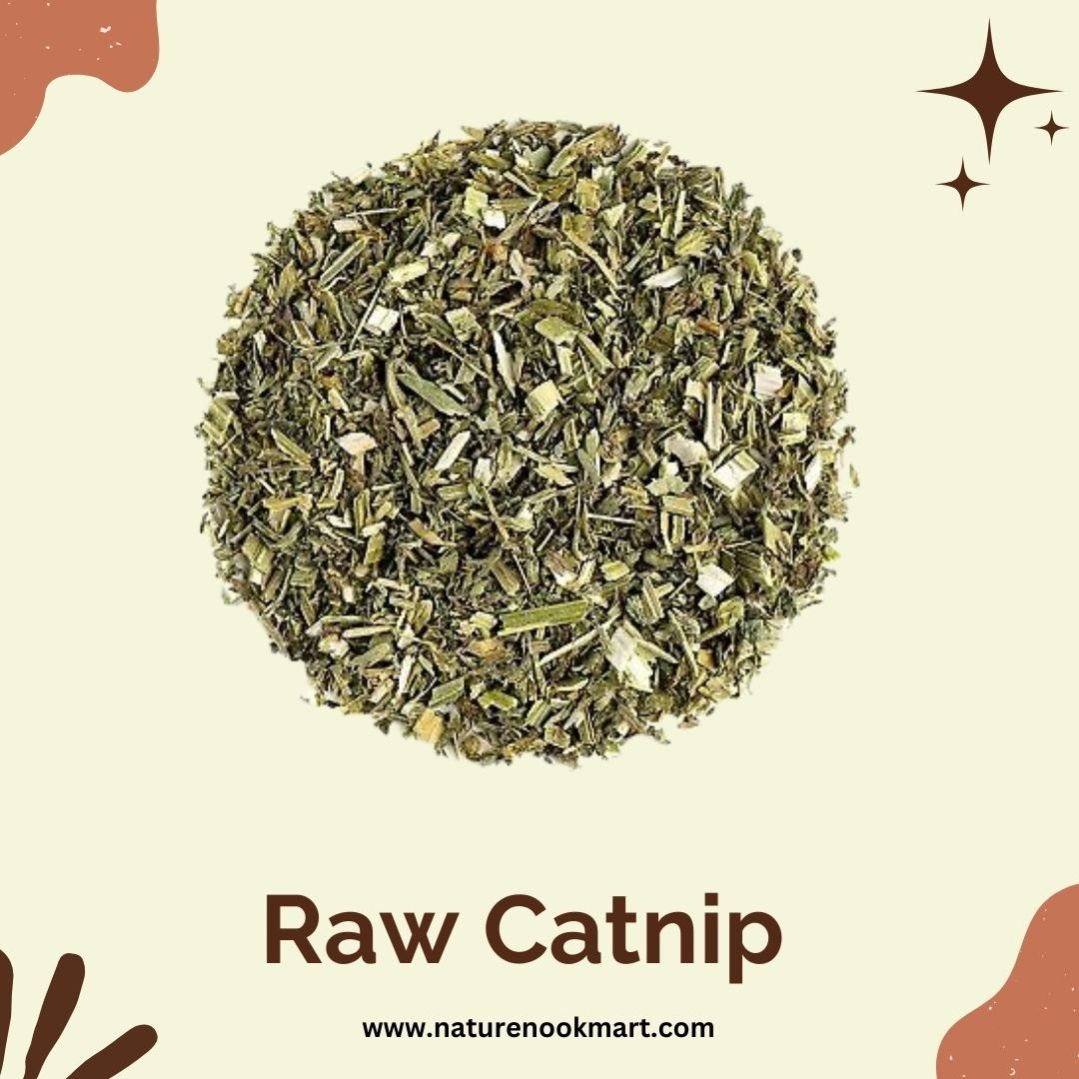

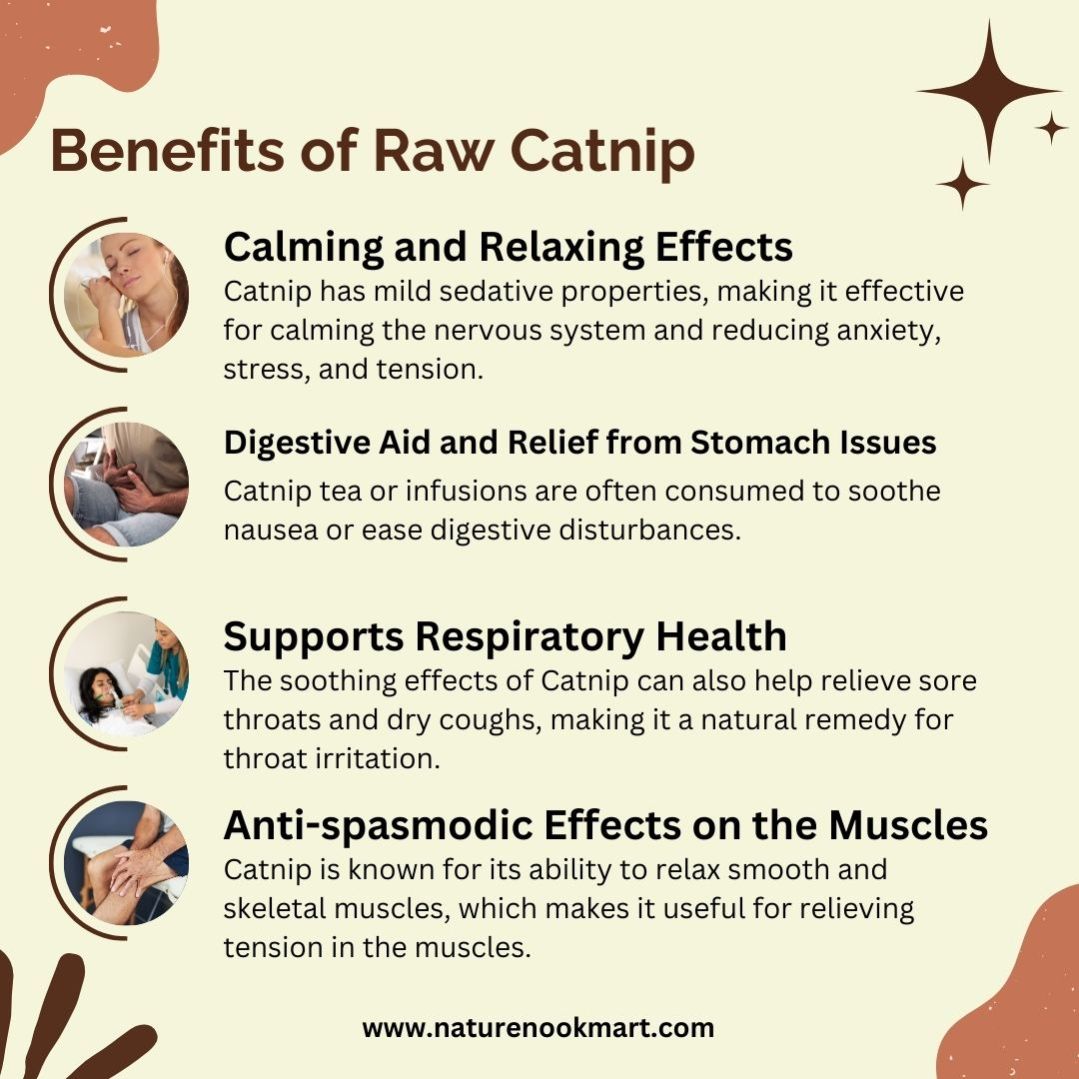
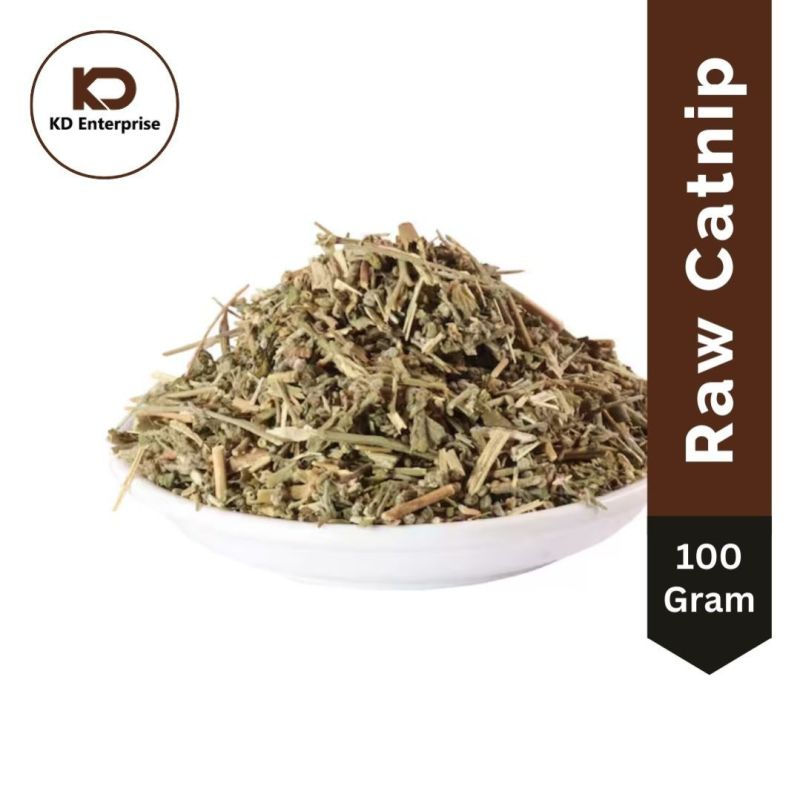
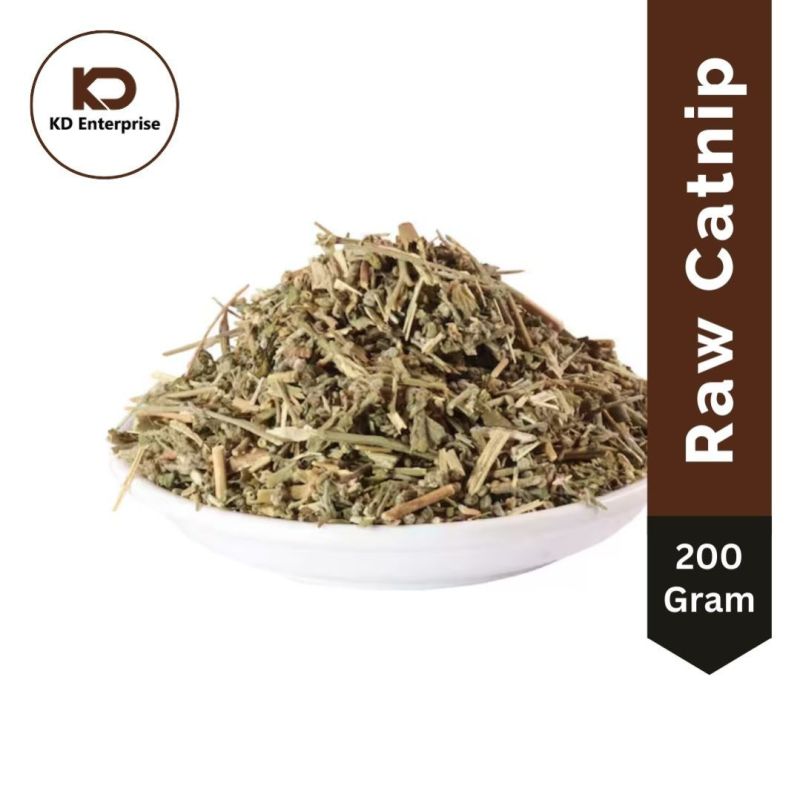
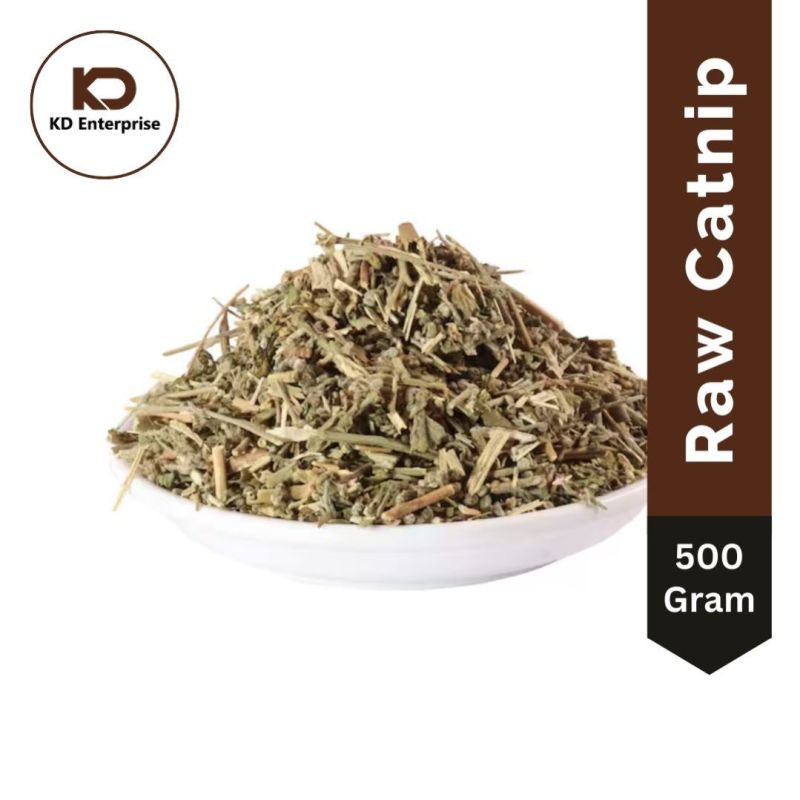

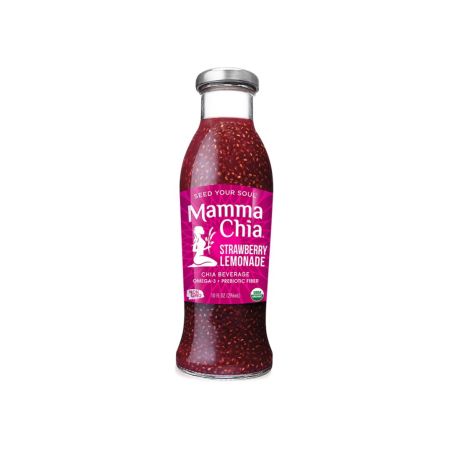


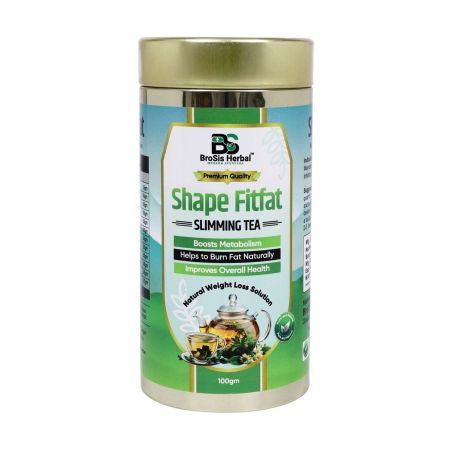
.jpg)
